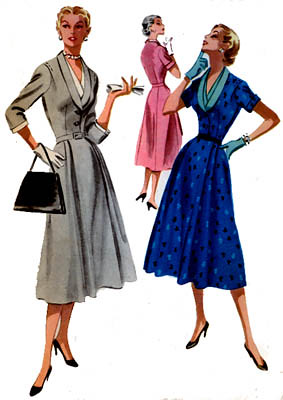
I'm no expert on chaos theory, but I do know that the most commonly used image of its workings is this: a butterfly beats its wings in one part of the world, eventually resulting in a hurricane in another. In other words, small effects at one point can have unexpected and seemingly unrelated effects in the future.
So it happened with a traffic jam in Paris in 1972. Fashion designer Celine Vipiana was stuck in the famous roundabout at the Arc de Triomphe. Bored, impatient, she found herself seeing as if for the first time the heavy black iron chains that ring the monument. She saw in their oblong links the ideal new logo for her fashion house, Celine. The "Blazon Chaine," as it's known, superceded the house's previous interlinked "Cs," (which were perhaps a little too similar to rival Chanel's).
Celine the fashion house began in 1947 in as a children's shoe store, but by the 1970s was dressing the mamans as well, in comfortable, classic, travel-ready separates that embodied the relaxed chic of ready-to-wear. Up against competitors like Rive Gauche and Chloe, Celine would never be at the cutting edge of fashion, but was instead producing clothes of reliable quality and "correctness" so dear to the French haute bourgouises (this would all change when the company was bought by conglomerate LVMH in the '90s, bringing in Michael Kors to infuse it with his brand of haute glam, but that's another offshoot of the story . . . )
Mine began a few days ago when I was in for a quick browse through my beloved local Oxfam charity shop/thrift store. I was there to drop a bag of clothes off, not pick anything new up, but I can never resist going around the corner to the ladies' section when I'm in there, because you never know.
The situation was not hopeful. I'd had a quick scan down the rails and nothing was leaping out, until I caught sight of a bit of metal near the bottom of a garment. Metal on garments that doesn't have a direct functional application like a button or a zip is usually not a good thing, because it's almost invariably a cheap bit of embellishment that would have been better off left off.


But this was different. A short chain, like half a bracelet, sturdily sewn onto a pocket of a gray cabled cardigan, one of a pair at hip level. Heavy links, nicely plated, and, best of all, enameled with cabochon rounds-- an expensive process that resulted in a subtle effect. The chains matched the buttons, which were also enameled, and bore at their centers interlocked backing "Cs".
The label? Celine. The vintage? I can't be sure, but I imagine it dates to sometime in the 70s, when the interlocked Cs were still heavily in use and the idea of a "blazon chaine" as a new logo coming to the fore.
The cardigan, by the way, is gorgeous. Classic, chic, and an outright steal at £6.99 (about $10.99).
And it just goes to show that a traffic jam that happened in Paris decades ago gave metal links an unexpected role in design history, just as metal links on an otherwise unexceptional rack of clothing found another unexpected but very happy place in my wardrobe.










